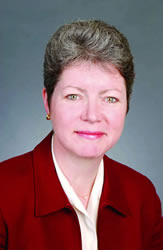 |
 |
 |
||||
 |
|
What’s Next for Oberlin?
It’s Friday night at the New Jersey Performing Arts Center…the San Francisco Orchestra directed by Michael Tilson Thomas…Mahler’s Fifth. There, right in the center, playing first chair flute, is Robin McKee ’76, associate principal. It’s food for my soul, and part of what makes an Oberlin education so unique. In 1997 the entire Oberlin community participated in the development of Broad Directions for Oberlin’s Future. It was an opportunity to explore all facets of Oberlin life and identify the characteristics most critical to our vision. The resulting plan laid the foundation for seven years of evolution on campus. While little has happened since then to change our fundamental view of Oberlin and the value of an Oberlin education, quite a bit has changed in the surrounding environment. Such change has presented new challenges, and of course, new opportunities. For this reason, the Board of Trustees and President Nancy Dye are leading a new strategic planning effort. For many, the term “strategic planning” carries too much of a business ring, but I would argue that the long-term health of an institution such as Oberlin requires us to be vigilant about understanding and planning for an uncertain future. A critical piece of this planning is understanding key environmental forces, setting goals for Oberlin in the context of these environmental forces, and then devising a program for achieving these goals. Several of these broad trends caught the attention of the Board of Trustees and prompted the initiation of this planning effort. First, the cost of providing the quality we expect in an Oberlin education is growing faster than our underlying financial resources. Second, competition for the best and brightest students continues to grow. Not only are state institutions offering lower cost “liberal arts” options, but some of the characteristics that were once uniquely Oberlin’s are now shared by other institutions. For example, Carleton College quotes data by the National Research Council on the number of doctoral degrees earned between 1986 and 1995—in which Carleton ranks first among four-year liberal arts institutions. The admissions web site at Swarthmore College reads, “At Swarthmore, you will find a passion for ideas, for teaching and learning, for community and collaboration, for knowledge in the service of creating a better world.” Grinnell promotes itself as being the first college west of the Mississippi to grant bachelor’s degrees to African Americans and women. The ongoing strategic planning effort will work to define what is unique about Oberlin and build a plan to retain our position and obtain the necessary resources. Faculty and staff have been engaged in discussions on campus, while the execu- tive board of the Alumni Association represents the Alumni Association on the Strategic Planning Steering Committee. You will continue to hear about this process throughout the year, at Alumni Council weekend, and through the pages of this magazine. What makes Oberlin unique? Part of it lies in the experience of the Mahler. Part of it lies in the view of the world we take into the workplace every day. We need to articulate these characteristics and build a plan to sustain them in an ever more challenging environment for higher education. |
